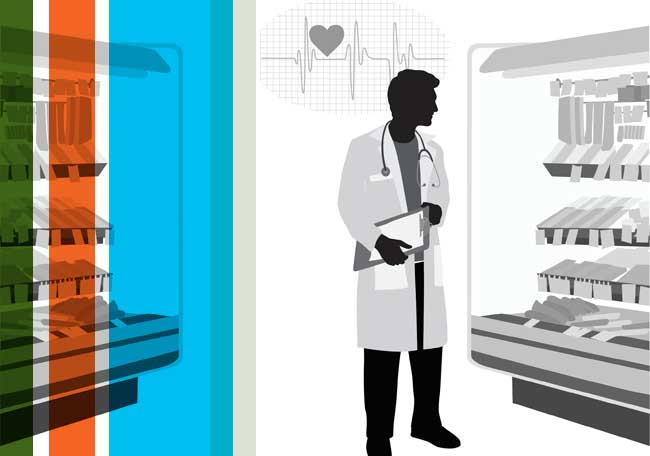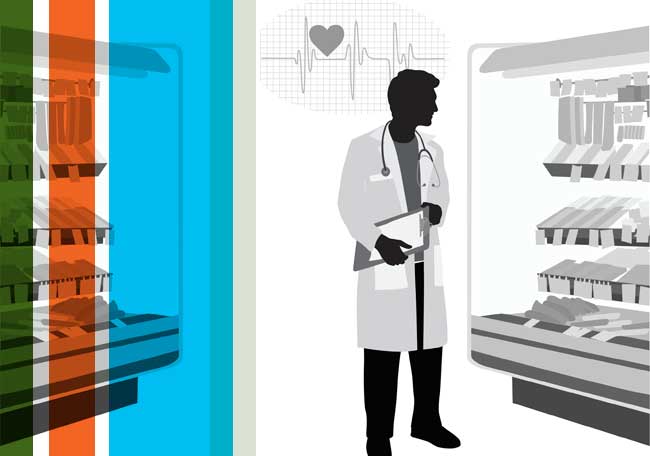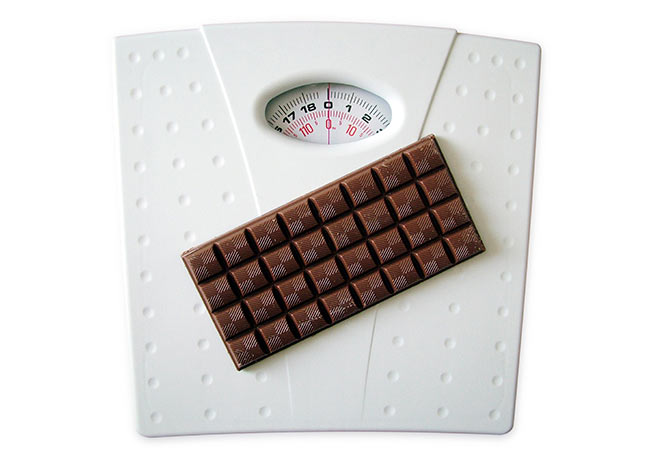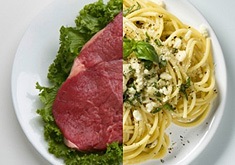Recomendaciones actuales sobre los lípidos en la alimentación

Referencias bibliográficas:
1. World Health Organization (WHO) Global Health Observatory (GHO) data, USA.
2. Eaton SB, Konner M (1985) Paleolithic nutrition. A consideration of its nature and current implications. N Engl J Med 312: 283-9.
3. Jeffery RW, Harnack LJ (2007) Evidence implicating eating as a primary driver for the obesity epidemic. Diabetes 56: 2673-6.
4. Huttunen JK, Manninen V, Mänttäri M, Koskinen P, Romo M, et al. (1991) The Helsinki Heart Study: central findings and clinical implications. Ann Med 23: 155-9.
5. Dietary Reference Intakes for Energy Carbohydrate Fiber Fat Fatty Acids Cholesterol Protein and-Amino-Acids, National Academic Press, Washington, D.C., USA.
6. Food and Agriculture Organization of the United Nations (FAOSTAT) FAO Statistics Division 2010, Food Balance Sheets, Rome, Italy.
7. Kushi LH, Byers T, Doyle C, Bandera EV, McCullough M, et al. (2006) American Cancer Society Guidelines on Nutrition and Physical Activity for cancer prevention: reducing the risk of cancer with healthy food choices and physical activity. CA Cancer J Clin 56: 254-81.
8. U.S. Departments of Agriculture (USDA) Report of the Dietary Guidelines Advisory Committee on the Dietary Guidelines for Americans, 2010, USA.
9. United States Department of Agriculture (2016) Economic Research Service (ERS) Food Availability (Per Capita) Data System, USA.
10. Hooper L, Abdelhamid A, Moore HJ, Douthwaite W, Skeaff CM, et al. (2012) Effect of reducing total fat intake on body weight: systematic review and meta-analysis of randomized controlled trials and cohort studies. BMJ 345: e7666.
11. Willett WC (1998) Is dietary fat a major determinant of body fat? Am J Clin Nutr 67: 556S-62S.
12. Heini AF, Weinsier RL (1997) Divergent trends in obesity and fat intake patterns: the American paradox. Am J Med 102: 259-64.
13. Hite AH, Feinman RD, Guzman GE, Satin M, Schoenfeld PA, et al. (2010) In the face of contradictory evidence: Report of the Dietary Guidelines for Americans Committee. Nutrition 26: 915-24.
14. World Health Organization (WHO) Global Database on Body Mass Index an interactive surveillance tool for monitoring nutrition transition, USA.
15. Ministerio de Salud (2009) Second National Risk Factors Survey (ENFR) [Segunda Encuesta Nacional Factores de Riesgo (ENFR)], Argentina.
16. Asterholm IW, Scherer PE (2012) Metabolic jet lag when the fat clock is out of sync. Nat Med 18: 1738-40.
17. Blüher M, Michael MD, Peroni OD, Ueki K, Carter N, et al. (2002) Adipose tissue selective insulin receptor knockout protects against obesity and obesity-related glucose intolerance. Dev Cell 3: 25-38.
18. Chen HC, Jensen DR, Myers HM, Eckel RH, Farese RV Jr (2003) Obesity resistance and enhanced glucose metabolism in mice transplanted with white adipose tissue lacking acyl CoA:diacylglycerol acyltransferase 1. J Clin Invest 111: 1715-22.
19. Silva JE (2003) The thermogenic effect of thyroid hormone and its clinical implications. Ann Intern Med 139: 205-13.
20. Cannon B, Nedergaard J (2004) Brown adipose tissue: function and physiological significance. Physiol Rev 84: 277-359.
21. Hirsch J, Hudgins LC, Liebel RL, Rosenbaum M (1998) Diet composition and energy balance in humans. Am J Clin Nutr 67: 551S-5S.
22. MacLean PS, Higgins JA, Johnson GC, Fleming-Elder BK, Donahoo WT, et al. (2004) Enhanced metabolic efficiency contributes to weight regain after weight loss in obesity-prone rats. Am J Physiol Regul Integr Comp Physiol 287: R1306-15.
23. Major GC, Alarie FP, Doré J, Tremblay A (2009) Calcium + vitamin D supplementation and fat mass loss in women very low calcium consumers: potential link with a calcium-specific appetite control. Br J Nutr 101:659-63.
24. Shi H, Norman AW, Okamura WH, Sen A, Zemel MB (2002) 1-25-Dihydroxyvitamin D 3 inhibits uncoupling protein 2 expression in human adipocytes. FASEB J 16: 1808-10.
25. LaKind JS, Goodman M, Nalman DQ (2012) Use of NHANES data to link chemical exposures to chronic diseases: a cautionary tale. PLoS One 7: e51086
26. Ley RE, Turnbaugh PJ, Klein S, Gordon JI (2006) Human gut microbes associated with obesity. Nature 10.1038/nature4441023a
27. Westerterp-Plantenga MS, Nieuwenhuizen A, Tomé D, Soenen S, Westerterp KR (2009) Dietary protein, weight loss, and weight maintenance. Annu Rev Nutr 29: 21-41. 26.
28. Murray RK, Granner DK, Mayes PA, Rodwell VW (2003) Harper’s Illustrated Biochemistry (26th Edn) Mc Graw- Hill, USA.
29. U.S. Department of Agriculture and U.S. Department of Health and Human Services (2015) 2015-2020 Dietary Guidelines for Americans (8th Edn), Washington, USA.
30. Garrow JS, James WPT (1993) Human nutrition and dietetics (9th Edn) Churchill Livingstone, UK.
31. Lee Y, Hirose H, Ohneda M, Johnson JH, McGarry JD, et al. (1994) Beta-cell lipotoxicity in the pathogenesis of non-insulin-dependent diabetes mellitus of obese rats: impairment in adipocyte-beta-cell relationships. Proc Natl Acad Sci USA 91: 10878-82.
32. Kawahito, S, Kitahata H, Oshita S (2009) Problems associated with glucose toxicity: role of hyperglycemia-induced oxidative stress. World J Gastroenterol 15: 4137-42.
33. Fontana L, Klein S, Holloszy JO (2010) Effects of long‐term calorie restriction and Endurance exercise on glucose tolerance, insulin action, and adipokine production. Age (Dordr) 32: 97‐108.
34. Saltiel AR (2003) Putting the brakes of insulin signaling. NEJM 349: 2560-62.
35. Melnik B (2012) Leucine signaling in the pathogenesis of type 2 diabetes and obesity. WJDiabetes 3: 38-53.
36. Skeaff CM, Miller J (2009) Dietary Fat and Coronary Heart Disease: Summary of evidence from Prospective Cohort and Randomized Controlled Trials. Ann Nutr Metab 55: 173-201.
37. Spreadbury I (2012) Comparison with ancestral diets suggests dense a celullar carbohydrates promote an inflamatory microbiota, and may be the primary dietary cause of leptin resistance and obesity. Diabetes Metab Syndr Obes 5: 175-189.
38. Mann GV, Spoerry A, Gray M, Jarashow D (1972) Atherosclerosis in the Masai. Am J Epidemiol 95: 26-37.
39. Ho K, Biss K, Mikkelson B, Lewis LA, Taylor CB (1971) The Masai of East Africa: some unique biological characteristics. Arch Pathol 95: 26-37.
40. Taylor BC, Ho Kang-Jey (1971) Studies on the Masai. Am J Clin Nutr 24: 1291-93.
41. Bang HO, Dyerberg J (1980) Lipid metabolism and ischemic heart disease in Greenland Eskimos. Adv Nutr Res 3:1-22.
42. Prior IA, Davidson F, Salmond CE, Czochanska Z (1981) Cholesterol, coconuts, and diet on Polynesian atolls: a natural experiment: the Pukapuka and Tokelau Island studies. Am J Clin Nutr 34: 1552-61.
43. Estruch R, Martínez-González MA, Corella D, Salas-Salvadó J, Ruiz-Gutiérrez V, et al. (2006) Effects of a Mediterranea-style diet on cardiovascular risk factors: a randomized trial. Ann Intern Med 45: 1-11.
44. Gardner CD, Kiazand A, Alhassan S, Kim S, Stafford RS, et al. (2007) Comparison of the Atkins, Zone, Ornish, and LEARN Diets for Change in Weight and Related Risk Factors among Overweight Premenopausal Women. The A TO Z Weight Loss Study: A Randomized Trial. JAMA 297: 969-77.
45. Siri-Tarino PW, Sun Q, Hu FB, Krauss RM (2010) Meta-analysis of prospective cohort Studies evaluating the association of saturated fat with cardiovascular disease. Am J Clin Nutr 91: 535-46.
46. Astrup A, Dyerberg J, Elwood P, Hermansen K, Hu FB, et al. (2011) The role of reducing intakes of saturated fat in the prevention of cardiovascular disease: where does the evidence stand in 2010? Am J Clin Nutr 93: 684-8.
47. Jakobsen MU, O’Reilly EJ, Heitmann BL, Pereira MA, Bälter K, et al. (2009) Major types of dietary fat and risk of coronary heart disease: a pooled analysis of 11 cohort studies. Am J Clin Nutr 89: 1425-32.
48. Keys A, Menotti A, Karvonen MJ, Aravanis C, Blackburn H, et al. (1986) The diet and 15-year death rate In the Seven Countries Study. Am J Epidemiol 124: 903-1551.
49. European Cardiovascular Disease Statistics (2005).
50. Mente A, Koning L, Shannon HS, Anand SS (2009) A Systematic Review of the Evidence Supporting a Causal Link between Dietary Factors and Coronary Heart Disease. Arch Int Med 169: 659-69.
51. Skeaff CM, Miller J (2009) Dietary Fat and Coronary Heart Disease: Summary of evidence from Prospective Cohort and Randomised Controlled Trials. Ann Nutr Metab 55: 173-201.
52. Fats and fatty acids in human nutrition (2010) Report of an expert consultation. Geneve. Food and agriculture organization of the United Nations. FAO food and nutrition paper 91. Rome 55: 173-201.
53. Hulbert AJ, Turner N, Storlien LH, Else PL (2005) Dietary fats and membrane function: implications for metabolism and disease. Biol Rev 80: 155-69.
54. Bonadonna RC, DeFronzo RA (1991) Glucose metabolism in obesity and type II diabetes. Diabete Metab 7: 112-35.
55. Baron AD, Zhu JSH, Weldon H, Maianu L, Garvey WT (1995) Glucosamine induces insulin resistance in vivo by affecting GLUT 4 translocation in skeletal muscle. Implications for glucose toxicity. J Clin Invest 96: 2792-801.
56. Hawkins M, Barzilai N, Liu R, Hu M,Chen W, et al. (1997) Role of the glucosamine pathway in fat-induced insulin resistance. J Clin Invest 99: 2173-82.
57. Golks A, Guerini D (2008) The O-linked N-acetilglucosamine modification in cellular signalling and the inmune system. EMBO reports 9: 748–53.
58. Obici S, Rossetti L (2003) Minireview: Nutrient Sensing and the Regulation of Insulin Action and Energy Balance. Endocrinology 144: 5172-8.
59. Unger RH (1995) Lipotoxicity in the pathogenesis of obesitydependent NIDDM: genetic and clinical implications. Diabetes 44: 863-70.
60. Sakai K, Matsumoto K, Nishikawa T, Suefuji M, Nakamaru K, et al. (2003) Mitochondrial reactive oxygen species reduce insulin secretion by pancreatic beta-cells. Biochem Biophys Res Commun 300: 216-22.
61. Kaneto H, Xu G, Song KH, Suzuma K, Bonner-Weir S, et al. (2001) Activation of the hexosamine pathway leads to deterioration of pancreatic beta-cell function through the induction of oxidative stress. J Biol Chem 276: 31099-104.
62. Kowluru RA (2003) Effect of reinstitution of good glycemic control on retinal oxidative stress and nitrative stress in diabetic rats. Diabetes 52: 818-23.
63. Prabhakar S, Starnes J, Shi S, Lonis B, Tran R (2007) Diabetic nephropathy is associated with oxidative stress and decreased renal nitric oxide production. J Am Soc Nephrol 18: 2945-52.
64. Brownlee M (2005) The pathobiology of diabetic complications: a unifying mechanism. Diabetes 54: 1615-25.
65. Rossetti L, Giaccari A, DeFronzo RA (1990) Glucose toxicity. Diabetes Care 13: 610-30.
66. Randle PJ, Priestman DA, Mistry SC, Halsall A (1994) Glucose fatty acid interactions and the regulation of glucose disposal. J Cell Biochem 55: 1-11.
67. Perseghin G, Ghosh S, Gerow K, Shulman GI (1997) Metabolic defects in lean non diabetic offspring of NIDDM parents: a cross-sectional study. Diabetes 46: 1001-9.
68. Saloranta C, Groop L (1996) Interactions between glucose and FFA metabolism in man. Diabetes Metab Rev 12: 15-36.
<Comentarios
Para ver los comentarios de sus colegas o para expresar su opinión debe ingresar con su cuenta de IntraMed.










